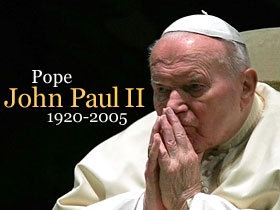After reading Terrence’s ‘Saying No to Narnia‘ and Pharyngula’s ‘Narnia as an inoculation‘, both of which pointed to a Guardian UK article titled ‘Narnia represents everything that is most hateful about religion‘, I was somewhat annoyed. As an open-minded, pro-choice, pro-gay marriage, anti-Bush liberal who was brought up in a Christian household and counts Christianity as a major part of who I am and why I’m an open-minded, pro-choice, pro-gay marriage, anti-Bush liberal, it occasionally gets under my skin when I’m reminded yet again that ‘Christian’ has become a dirty word synonymous with the worst of the bigoted bible-thumping set, tainting anything that it touches.
It was quite nice to see Arcterex’s take on the same article, then:
I read the Narnia books as a child, and absolutely loved them. They had a similar draw as modern day Harry Potter. The downtrodden who think they aren’t anybody in the world finding out that they are a heros in a magical world.
Of course, then I found out later on in live about the religious overtones in the books…
And couldn’t care less. A good story is a good story, and personally I find this sort of ignorant reporting as bad as the Christian groups who go around saying how Harry Potter is promoting kids to become satanists and how it’s an evil book. It’s a friggin’ book and a good story. Geez.
Damn skippy. Sure, there are Christian overtones to the Narnia stories. There are Christian overtones to the Matrix stories, the Lord of the Rings stories, the Star Wars stories, and countless other stories (both printed and filmed), too. Why all the rancor? Just because the religious right (who all too often seem to embody the antithesis to the Christianity I grew up with) has jumped all over The Lion, the Witch and the Wardrobe, is it suddenly impossible to go out and enjoy a fun fantasy movie?
Sure, you can read all sorts of meaning into the stories and why they’re being brought to the screen now — religious indoctrination, right-wing propelled mass media conspiracy theories, whatever. You can also tell your inner Fox Mulder that every so often it doesn’t matter and go watch a movie.
That’s what I’m planning on doing.




 You scored as agnosticism. You are an agnostic. Though it is generally taken that agnostics neither believe nor disbelieve in God, it is possible to be a theist or atheist in addition to an agnostic. Agnostics don’t believe it is possible to prove the existence of God (nor lack thereof).
You scored as agnosticism. You are an agnostic. Though it is generally taken that agnostics neither believe nor disbelieve in God, it is possible to be a theist or atheist in addition to an agnostic. Agnostics don’t believe it is possible to prove the existence of God (nor lack thereof).